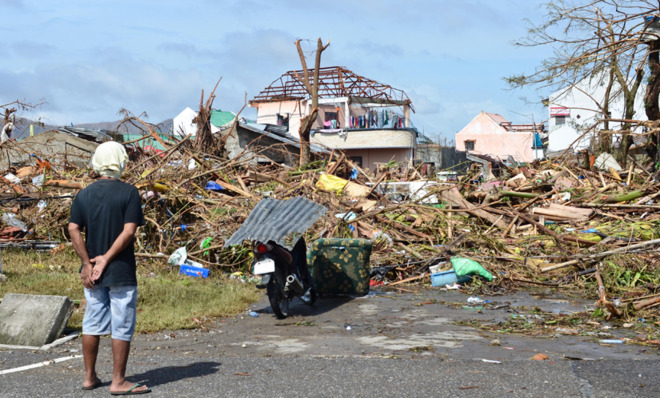Did climate change cause Super Typhoon Haiyan?
Scientists grapple with the causes of a storm that might have killed more than 10,000 people

Super Typhoon Haiyan, one of the strongest storms ever recorded, might have killed at least 10,000 people as it swept through the Philippines, according to estimates by the Red Cross. And the country's officials have been quick to point the finger at climate change.
"What my country is going through as a result of this extreme climate event is madness," Yeb Sano, the country's representative at this week's United Nations climate change talks in Warsaw, Poland, told 190 delegates from across the globe. "The climate crisis is madness. We can stop this madness… Typhoons such as Haiyan and its impacts represent a sobering reminder to the international community that we cannot afford to procrastinate on climate action."
The Philippines has reason to be concerned about climate change. The country experiences, on average, 20 typhoons a year — including three super typhoons in the past three years.
The Week
Escape your echo chamber. Get the facts behind the news, plus analysis from multiple perspectives.

Sign up for The Week's Free Newsletters
From our morning news briefing to a weekly Good News Newsletter, get the best of The Week delivered directly to your inbox.
From our morning news briefing to a weekly Good News Newsletter, get the best of The Week delivered directly to your inbox.
It's also the world's 12th-most populated country, situated on thousands of low-lying islands, which is not exactly an ideal situation when creating an evacuation plan. That combination of factors has led researchers to declare the Philippines the third-most vulnerable country on Earth to the effects of climate change. The two countries it trails are both tiny islands in the South Pacific: Vanuatu and Tonga.
In other words, if climate change is causing bigger and more frequent storms, the Philippines has more to lose than just about any other normal-sized country. That makes the question of whether climate change caused Haiyan especially important to Sano and other Filipino politicians.
So, is it? It's hard to pin any single weather event on climate change. Scientists study large-scale weather patterns over long periods of time, making it unlikely they would definitively declare any particular storm the result of a warming planet.
But most scientists generally agree on "the broad premise that a hotter climate likely contributes to some increase in hurricane strength, that this process is already underway, and that it will intensify," wrote PBS' John McQuaid after Hurricane Sandy hit the Northeast last year.
A free daily email with the biggest news stories of the day – and the best features from TheWeek.com
(A hurricane and a typhoon are the same thing, except one takes place in the Atlantic and Northeast Pacific, and the other in the South Pacific).
"Once [typhoons] do form, they get most of their energy from the surface waters of the ocean," Will Steffen, a professor at Australian National University, told the Sydney Morning Herald. "We know sea-surface temperatures are warming pretty much around the planet, so that's a pretty direct influence of climate change on the nature of the storm."
Researchers have been pushing for more funding that would allow them to study the origins of storms, letting us "know now how climate change is affecting us rather than how it will affect us in 100 years' time," Myles Allen, a professor of geosystem science at Oxford University, told The Guardian.
Until then, it will be tough for officials like Yeb Sano to claim with absolute certainty that climate change caused Haiyan. He will, however, be able to point to evidence that the Philippines is in particularly serious danger as global temperatures rise over time.
"Science tells us that simply, climate change will mean more intense tropical storms," he said. "The energy that is stored in the waters off the Philippines will increase the intensity of typhoons and the trend we now see is that more destructive storms will be the new norm."
Keith Wagstaff is a staff writer at TheWeek.com covering politics and current events. He has previously written for such publications as TIME, Details, VICE, and the Village Voice.
-
 Biggest political break-ups and make-ups of 2025
Biggest political break-ups and make-ups of 2025The Explainer From Trump and Musk to the UK and the EU, Christmas wouldn’t be Christmas without a round-up of the year’s relationship drama
-
 Why 2025 was a pivotal year for AI
Why 2025 was a pivotal year for AITalking Point The ‘hype’ and ‘hopes’ around artificial intelligence are ‘like nothing the world has seen before’
-
 The best drama TV series of 2025
The best drama TV series of 2025the week recommends From the horrors of death to the hive-mind apocalypse, TV is far from out of great ideas